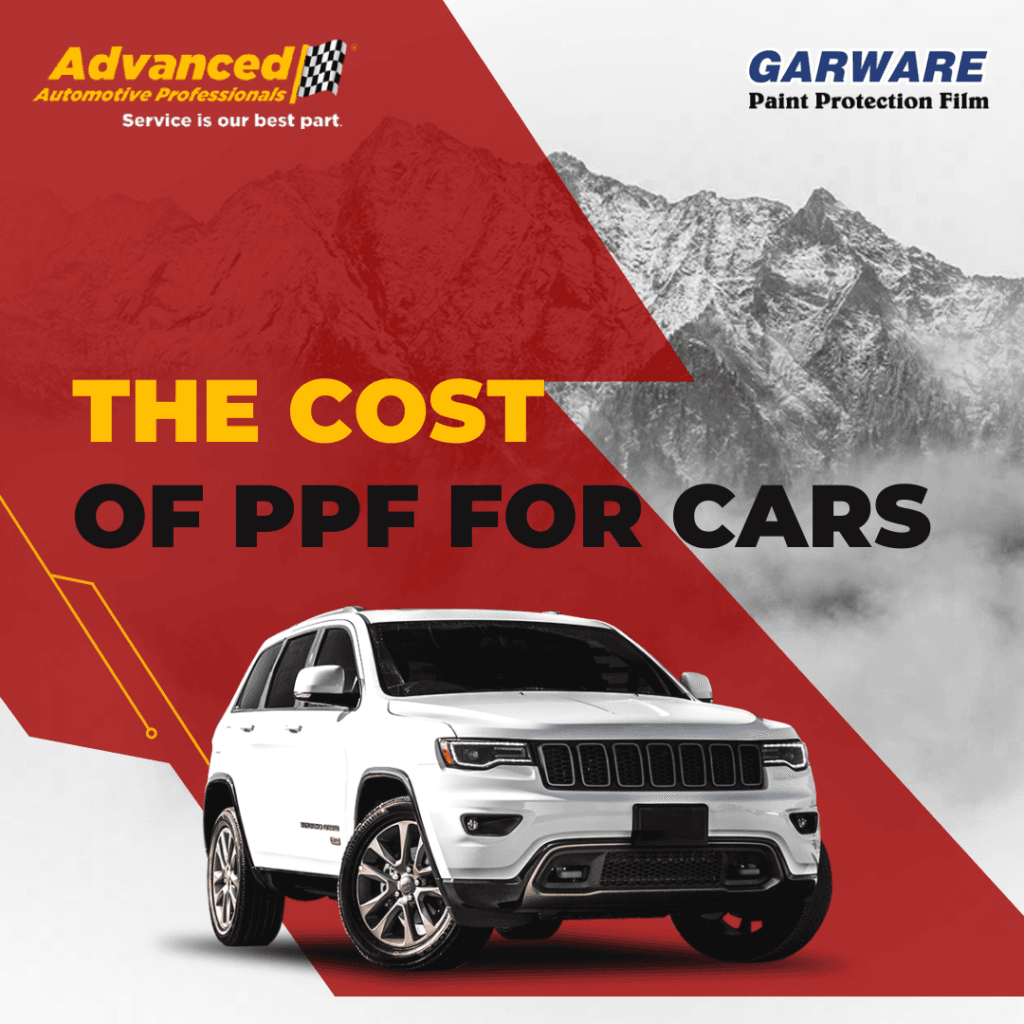When you invest in a car, it’s not just about owning a vehicle that takes you from point A to point B. It’s about maintaining its pristine condition and ensuring that it looks as good as it did the day you drove it off the lot. Modern vehicles are often subject to harsh environmental conditions, road debris, and other factors that can degrade their appearance. This is where PPF car protection becomes invaluable.
But what is PPF for cars? How does it function, and how can it help protect your vehicle’s paint and overall appearance? In this blog, we’ll delve into the world of paint protection film, its benefits, its installation process, and how it stands as one of the best investments you can make for your vehicle.
Understanding the Lifespan of Paint Protection Film and When to Replace It
Types of Paint Protection Film
There are generally two types of paint protection film:
- Glossy PPF: This type of film has a glossy finish that enhances the shine of your car’s original paint. It gives your car a luxurious, polished appearance while safeguarding the surface from damage.
- Matte PPF: For those who prefer a more subtle or non-reflective look, matte PPF offers the same level of protection but with a matte finish. This can provide a unique aesthetic while ensuring the paint underneath remains intact.
What Is PPF for Cars?
Now that we’ve covered what is paint protection film, let’s go deeper into what is PPF for cars specifically. PPF is not just a layer of film; it’s an investment in your car’s long-term aesthetics. Whether you’re driving on a daily commute or taking your car on an off-road adventure, your car’s exterior is constantly exposed to threats like scratches, stone chips, chemical stains, bird droppings, and UV rays.
When people ask, What is PPF for cars? the simplest answer is that it’s a transparent, self-healing film that protects your car’s paint from external damages. The film has a self-healing property due to the elasticity of the urethane it’s made from. Minor scratches and scuffs can heal automatically when exposed to heat or direct sunlight.
The Technology Behind PPF
PPF is engineered with multiple layers that each serve a different function:
- Top Coat: The top layer of PPF is designed to resist scratches and stains. This layer often has self-healing properties, which means minor scratches disappear over time as the material returns to its original form.
- Polyurethane Layer: This is the core protective layer. Polyurethane is flexible and durable, allowing it to absorb impacts and protect the paint underneath from damage.
- Adhesive Layer: This layer allows the film to adhere to the surface of your car without damaging the paint. It’s strong enough to ensure long-term protection but can be removed without leaving a residue.
By combining these layers, PPF car protection ensures that your car’s paint stays intact and looks brand new, even after years of exposure to the elements.
What PPF Car Protection Covers
One of the best aspects of PPF car protection is its versatility. It can be applied to various parts of the vehicle to protect high-impact areas:
- Hood and Front Bumper: These areas are most susceptible to road debris and stone chips.
- Fenders: PPF helps protect the curved surfaces of the car from scratches caused by contact with bushes, trees, or other vehicles.
- Mirrors: The side mirrors are often exposed to damage from flying debris and parking mishaps.
- Doors and Door Handles: These areas can easily get scratched by keys, rings, or just general wear and tear.
- Rear Wheel Arches: Another area that often encounters road debris and dirt.
For those looking for comprehensive protection, full-body PPF can be applied, ensuring that every inch of the vehicle’s paint is safeguarded.
The Benefits of PPF Car Protection
There are numerous advantages to investing in PPF car protection. Let’s look at some of the top benefits:
Protection Against Scratches and Stone Chips
One of the most common causes of paint damage is scratches and chips from stones and road debris. Even small pebbles kicked up by other vehicles can cause chips in your car’s paint, which may lead to rusting over time. With paint protection film, you can avoid costly paint repairs by having a sacrificial layer in place that absorbs the impact.
UV and Chemical Protection
The sun’s UV rays can cause paint to fade over time, especially in areas where the sun is particularly harsh. In addition, chemicals like bird droppings, bug splatter, and tree sap can etch into the paint and cause permanent stains. PPF car protection offers a strong defense against both UV rays and chemical damage, ensuring that your car’s paint stays vibrant and unblemished.
Self-Healing Properties
One of the most innovative features of modern paint protection film is its self-healing ability. Minor scratches and swirl marks can repair themselves when exposed to heat, either from the sun or warm water. This keeps your vehicle looking smooth and polished without needing frequent touch-ups.
Enhanced Resale Value
A car that looks good is worth more. With PPF car protection, your vehicle’s paint remains in mint condition, which can increase its resale value. Buyers are often willing to pay more for a car that has been well-maintained and protected against the elements.
Invisible Protection
Unlike other protective measures like car bras or plastic covers, PPF for cars is nearly invisible. When professionally applied, it blends seamlessly with the car’s exterior, preserving the vehicle’s original look without compromising on style.
Cost-Effective in the Long Run
While the upfront cost of paint protection film may seem high, it can save you money in the long run. By avoiding paint repairs and touch-ups, you can offset the initial investment. Plus, a well-maintained car with undamaged paint requires less frequent detailing.
The Installation Process of Paint Protection Film
Now that you know what PPF for cars is and the benefits it provides, you might be wondering how it’s applied. The installation of paint protection film is a meticulous process that requires professional expertise to ensure proper adhesion and an immaculate finish.
Step-by-Step Installation
Surface Preparation: Before the film can be applied, the car’s surface must be thoroughly cleaned and decontaminated. Any dirt, grime, or old wax must be removed to ensure the film adheres properly.
- Film Cutting: The PPF is pre-cut to match the dimensions of the specific areas being covered. Advanced computer software is used to ensure a precise fit for each vehicle model.
- Application: A soapy water solution is sprayed on the car’s surface to allow the film to be positioned accurately. The PPF is then laid over the surface and carefully adjusted for alignment.
- Squeegee: A squeegee is used to remove any excess water and air bubbles trapped between the film and the car’s paint. This ensures that the film lies perfectly flat against the surface.
- Heat Application: In some cases, heat is applied to help the film conform to the curves and contours of the vehicle. The heat also activates the film’s adhesive properties.
- Final Inspection: After the film is in place, the installer will inspect the car to ensure there are no imperfections. Any minor adjustments are made before the job is considered complete.
How Long Does Paint Protection Film Last?
One of the most common questions people ask about PPF for cars is how long it lasts. High-quality paint protection film can last anywhere from 5 to 10 years, depending on factors such as environmental exposure, driving habits, and how well the film is maintained.
Regular washing and maintenance can extend the lifespan of the film. Some PPFs come with warranties, which provide added peace of mind that your vehicle will remain protected for many years to come.
Maintaining Paint Protection Film
While PPF car protection is highly durable, it’s important to care for it properly to ensure it lasts as long as possible. Here are some tips for maintaining paint protection film:
- Regular Washing: Wash your car regularly with a gentle, pH-balanced soap to remove dirt and grime that can wear down the film over time.
- Avoid Harsh Chemicals: Stay away from abrasive cleaners, as they can damage the film’s surface. Opt for products specifically designed for use on PPF.
- Use a Microfiber Cloth: When drying your car, use a soft microfiber cloth to prevent scratches and swirl marks.
- Avoid Pressure Washing: While it’s okay to wash your car with a hose, avoid using high-pressure washers, as they can lift the edges of the film.
Conclusion:
In summary, what is PPF for cars? It’s a cutting-edge technology that offers unparalleled protection for your vehicle’s paint. Whether you’re looking to shield your car from stone chips, scratches, or the harmful effects of UV rays, paint protection film provides a nearly invisible barrier that maintains your car’s aesthetic and resale value.
If you’re serious about keeping your car looking brand new for years to come, consider investing in paint protection film. What is paint protection film? It is a transparent, durable layer of urethane applied to your vehicle’s exterior that protects it from scratches, chips, UV damage, and more. With its numerous benefits and advanced technology, paint protection film is the ultimate solution for preserving your vehicle’s beauty and value over time. This protective film acts as a shield against environmental hazards while maintaining the original look of your car.
For car enthusiasts and everyday drivers alike, PPF car protection is a wise investment. By preserving the condition of your vehicle, you can enjoy a flawless finish and peace of mind knowing that your car is protected from the elements.



